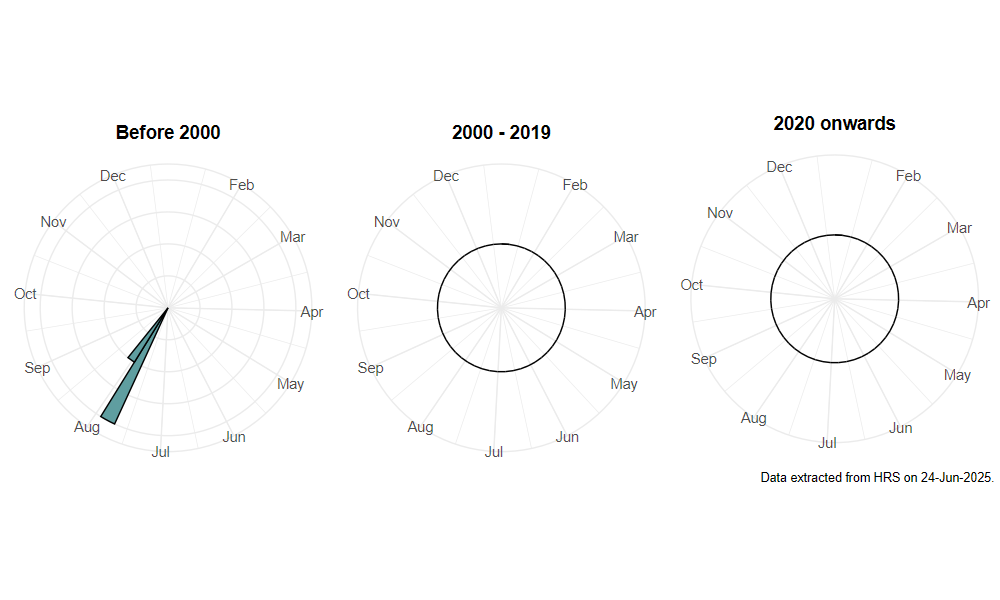Helophilus affinis Wahlberg, 1844
Identification
Identification difficulty = 4. ![]()
![]() according to Ball & Morris, 20241
according to Ball & Morris, 20241
Biology
The larva is not described. According to Speight (2017)2, it is associated with small water bodies in unimproved grassland, acid fen and the edge of raised bogs. Adults hover over small pools.
Flight period
The following plots show the number of unique records per week excluding those reported to be of immature stages.

Status
Vagrant.
Distribution
This species was added to the British list by Stuke (1996)3, based on a single specimen in the Royal Museum of Scotland collected by A.B. Duncan in August 1982 on Fair Isle, and originally identified as H. hybridus. It has been rapidly extending its range southwards from Scandinavia and northern Europe in recent decades. It has been recorded regularly from Denmark (previously only isolated specimens), and for the first time in the Netherlands and NW Germany since 1980 and recently in SW Germany and Switzerland (Speight, 20144. Speight (1988)5 predicted its occurrence in Britain, and gives a key to separate it from the other British members of the genus.

-
Ball, S., & Morris, R. (2024). Hoverflies of Britain and Ireland. WILDGuides (3rd ed.). Oxford: Princeton University Press. ↩
-
Speight, M. (2017). Species accounts of European Syrphidae ( No. 97). yrph the Net, the database of European Syrphidae (Diptera) (p. 294). Dublin: Syrph the Net publications. Retrieved from https://pollinators.ie/wordpress/wp-content/uploads/2018/05/StN-2017-Species-Accounts.pdf ↩
-
Stuke, J. (1996). Helophilus affinis new to the British Isles (Diptera, Syrphidae). Dipterists Digest (Second Series), 3, 45–46. ↩
-
Ball, S., & Morris, R. (2014). A review of the scarce and threatened flies of Great Britain. Part 6: Syrphidae. ( No. 9). Species status (pp. 1–130). Peterborough: JNCC. ↩
-
Speight, M. (1988). Syrphidae known from temperate Western Europe: potential additions to the fauna of Great Britain and Ireland and a provisional species list for N. France. Dipterists Digest (first series), 1, 2–35. ↩